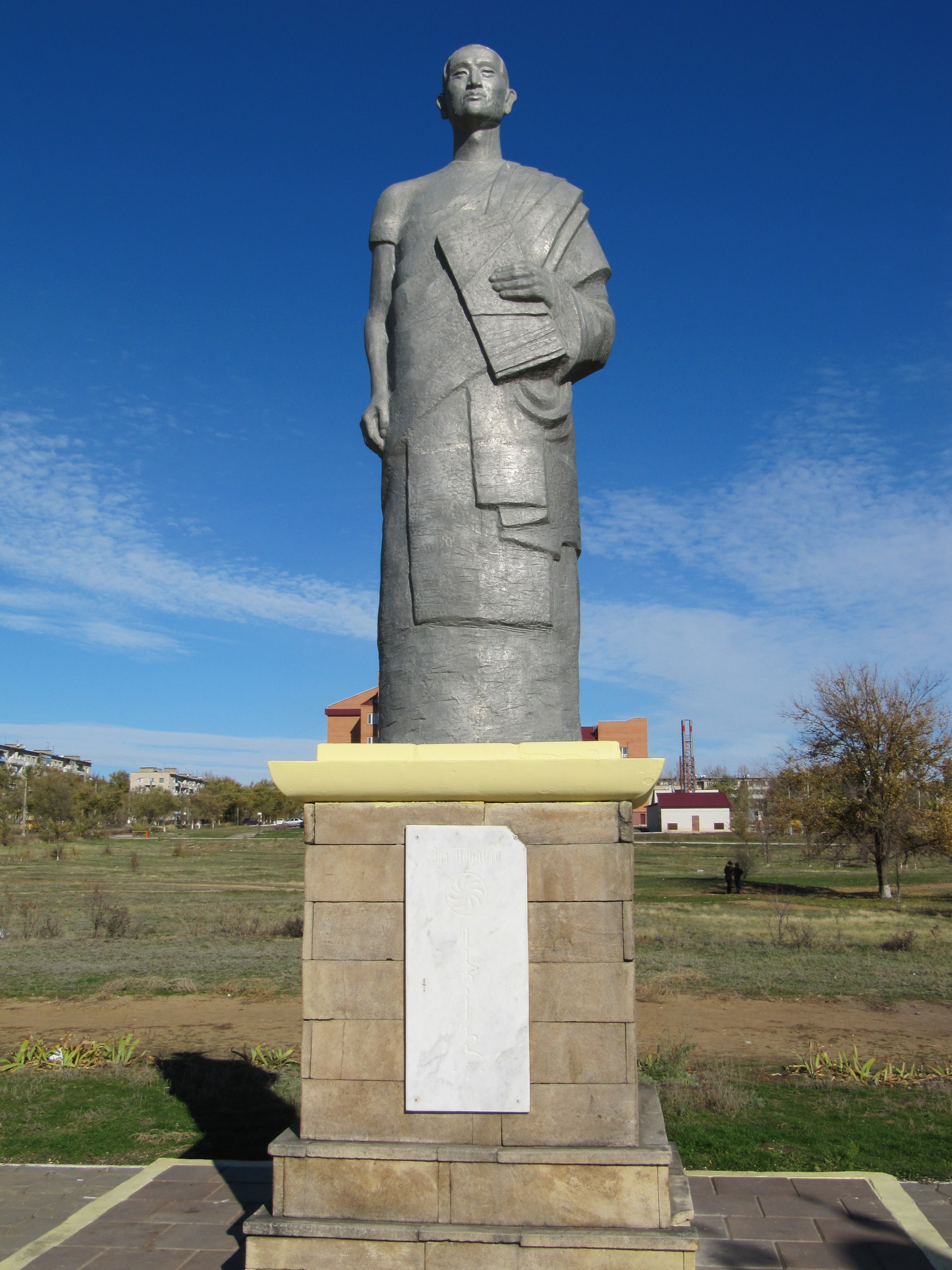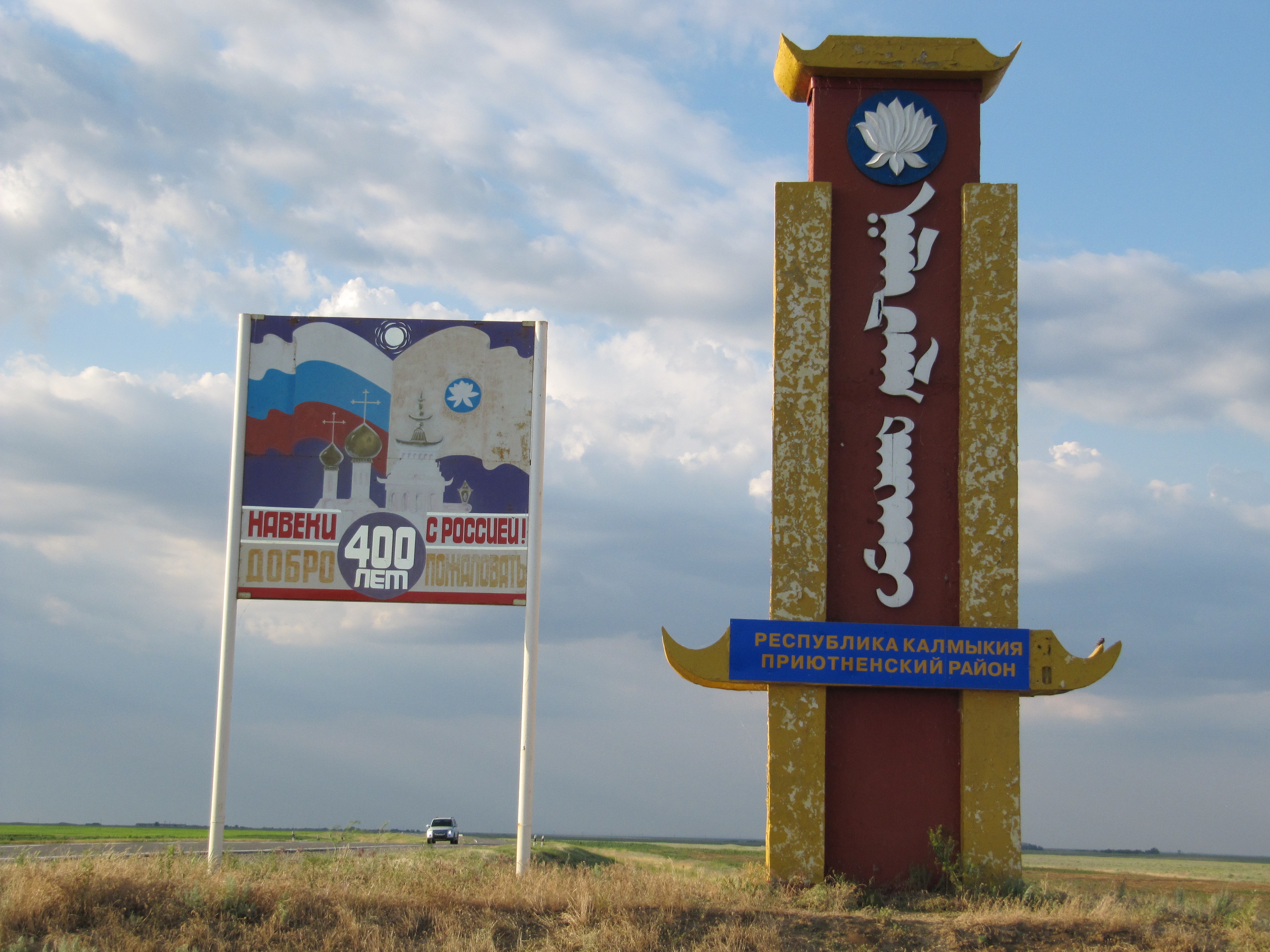|
Zaya Pandit
Zaya Pandita or Namkhaijamts (1599–1662) was a Buddhist missionary priest and scholar of Oirat origin who is the most prominent Oirat Buddhist scholar. Among his accomplishments is the invention of the Clear Script. Biography Zaya Pandita was the fifth son of Babakhan, a minor Khoshut prince. After Babakhan converted to Tibetan Buddhism in the early 17th century, he, like many other Oirat princes, wished for one of his sons to enter the Buddhist clergy. In pursuit of his wish, Babakhan chose Zaya to become a śrāmaṇera ("novice monk"). In 1615, Zaya journeyed to Lhasa where he would study and practice Buddhism, including study under the guidance of the Lobsang Chökyi Gyaltsen, 4th Panchen Lama. In 1638, Zaya Pandita left Tibet at the direction of the Panchen Lama to conduct missionary work among the Mongols. One year later in 1640, he assisted Erdeni Batur, Khun Taiyishi of the Choros (Oirats) tribe, in assembling a pan-Mongol conference between the Oirat and the Khalkh ... [...More Info...] [...Related Items...] OR: [Wikipedia] [Google] [Baidu] |
Manchu People
The Manchus (; ) are a Tungusic East Asian ethnic group native to Manchuria in Northeast Asia. They are an officially recognized ethnic minority in China and the people from whom Manchuria derives its name. The Later Jin (1616–1636) and Qing (1636–1912) dynasties of China were established and ruled by the Manchus, who are descended from the Jurchen people who earlier established the Jin dynasty (1115–1234) in northern China. Manchus form the largest branch of the Tungusic peoples and are distributed throughout China, forming the fourth largest ethnic group in the country. They can be found in 31 Chinese provincial regions. Among them, Liaoning has the largest population and Hebei, Heilongjiang, Jilin, Inner Mongolia and Beijing have over 100,000 Manchu residents. About half of the population live in Liaoning and one-fifth in Hebei. There are a number of Manchu autonomous counties in China, such as Xinbin, Xiuyan, Qinglong, Fengning, Yitong, Qingyuan, Weichang, Kua ... [...More Info...] [...Related Items...] OR: [Wikipedia] [Google] [Baidu] |
Lamas
Lamas may refer to: * the plural form of Lama, a title for a teacher of the Dharma in Tibetan Buddhism. Places *Lamas Province, Peru **Lamas District **Lamas, Peru, the capital of Lamas Province and seat of Lamas District *Lamas (Braga), a parish in Braga District, Portugal *Lamas (Cadaval), a parish in Cadaval Municipality, Lisbon District, Portugal *Lamas (Miranda do Corvo), a parish in Miranda do Corvo Municipality, Coimbra District, Portugal *Lamas (Macedo de Cavaleiros), a parish in Macedo de Cavaleiros Municipality, Bragança District, Portugal *Santa Maria de Lamas, a parish in Aveiro District, Portugal *Lamas, Norfolk, a village in England Other uses *Lamas (surname) *Lamas Quechua, a variety of Quechuan language *London and Middlesex Archaeological Society (LAMAS) See also *Lama (other) *Lammas Lammas Day (Anglo-Saxon ''hlaf-mas'', "loaf-mass"), also known as Loaf Mass Day, is a Christian holiday celebrated in some English-speaking countries in the Northe ... [...More Info...] [...Related Items...] OR: [Wikipedia] [Google] [Baidu] |
Tibetan Buddhist Priests From Kalmykia
Tibetan may mean: * of, from, or related to Tibet * Tibetan people, an ethnic group * Tibetan language: ** Classical Tibetan, the classical language used also as a contemporary written standard ** Standard Tibetan, the most widely used spoken dialect ** Tibetan pinyin, a method of writing Standard Tibetan in Latin script ** Tibetan script ** any other of the Tibetic languages Tibetan may additionally refer to: Culture * Old Tibetan, an era of Tibetan history * Tibetan art * Music of Tibet * Tibetan rug * Tibetan culture * Tibetan cuisine Religion * Tibetan Buddhism * Tibetan Muslims Other uses * Tibetan alphabet * Tibetan (Unicode block) * Tibetan name * Tibetan calendar * Tibetan Spaniel, a breed of dog * Tibetan Mastiff, a breed of dog See also * Tibetan Bells (other) * Traditional Tibetan medicine * Tibetan language (other) Tibetan language may refer to: * Classical Tibetan, the classical language used also as a contemporary written standard * Lhasa Ti ... [...More Info...] [...Related Items...] OR: [Wikipedia] [Google] [Baidu] |
1662 Deaths
Year 166 ( CLXVI) was a common year starting on Tuesday (link will display the full calendar) of the Julian calendar. At the time, it was known as the Year of the Consulship of Pudens and Pollio (or, less frequently, year 919 ''Ab urbe condita''). The denomination 166 for this year has been used since the early medieval period, when the Anno Domini calendar era became the prevalent method in Europe for naming years. Events By place Roman Empire * Dacia is invaded by barbarians. * Conflict erupts on the Danube frontier between Rome and the Germanic tribe of the Marcomanni. * Emperor Marcus Aurelius appoints his sons Commodus and Marcus Annius Verus as co-rulers (Caesar), while he and Lucius Verus travel to Germany. * End of the war with Parthia: The Parthians leave Armenia and eastern Mesopotamia, which both become Roman protectorates. * A plague (possibly small pox) comes from the East and spreads throughout the Roman Empire, lasting for roughly twenty years. * The ... [...More Info...] [...Related Items...] OR: [Wikipedia] [Google] [Baidu] |
1599 Births
__NOTOC__ Events January–June * January 8 – The Jesuit educational plan, known as the ''Ratio Studiorum The ''Ratio atque Institutio Studiorum Societatis Iesu'' (''Method and System of the Studies of the Society of Jesus''), often abbreviated as ''Ratio Studiorum'' (Latin: ''Plan of Studies''), was a document that standardized the globally influen ...'', is issued. * March 12 – Robert Devereux, 2nd Earl of Essex, is appointed Lord Lieutenant of Ireland, by Queen Elizabeth I of England. * April 23 – The Earl of Essex arrives in Dublin at the head of 16,000 troops, the largest army ever seen in Ireland. * May 16 – The Kalmar Bloodbath (1599), Kalmar Bloodbath takes place in Kalmar, Sweden. * May 29 – Essex takes Cahir Castle, supposedly the strongest in Ireland, after a short Siege of Cahir Castle, siege. * June 20 – The Synod of Diamper is convened. July–December * July – Second Dutch Expedition to Indonesia: A Dutch fleet returns to Amsterdam, ca ... [...More Info...] [...Related Items...] OR: [Wikipedia] [Google] [Baidu] |
Xinjiang
Xinjiang, SASM/GNC: ''Xinjang''; zh, c=, p=Xīnjiāng; formerly romanized as Sinkiang (, ), officially the Xinjiang Uygur Autonomous Region (XUAR), is an autonomous region of the People's Republic of China (PRC), located in the northwest of the country at the crossroads of Central Asia and East Asia. Being the largest province-level division of China by area and the 8th-largest country subdivision in the world, Xinjiang spans over and has about 25 million inhabitants. Xinjiang borders the countries of Mongolia, Russia, Kazakhstan, Kyrgyzstan, Tajikistan, Afghanistan, Pakistan and India. The rugged Karakoram, Kunlun and Tian Shan mountain ranges occupy much of Xinjiang's borders, as well as its western and southern regions. The Aksai Chin and Trans-Karakoram Tract regions, both administered by China, are claimed by India. Xinjiang also borders the Tibet Autonomous Region and the provinces of Gansu and Qinghai. The most well-known route of the historic Silk Ro ... [...More Info...] [...Related Items...] OR: [Wikipedia] [Google] [Baidu] |
Dzungaria
Dzungaria (; from the Mongolian language, Mongolian words , meaning 'left hand') is a geographical subregion in Northwest China that corresponds to the northern half of Xinjiang. It is thus also known as Beijiang, which means "Northern Xinjiang". Bounded by the Altai Mountains to the north and the Tian Shan mountain range to the south, Dzungaria covers approximately , and borders Kazakhstan to the west and Mongolia to the east. In contexts prior to the mid-18th century Dzungar genocide, the term "Dzungaria" could cover a wider area, conterminous with the Oirats, Oirat-led Dzungar Khanate. Although Dzungaria is geographically, historically, and ethnically distinct from the Tarim Basin (or Nanjiang, ), the Manchu people, Manchu-led Qing dynasty integrated both areas into one province, Xinjiang. Dzungaria is Xinjiang's center of heavy industry, generates most of the region's GDP, and houses its political capital Ürümqi (Oirat language, Oirat for 'beautiful pasture'). As such, Dzun ... [...More Info...] [...Related Items...] OR: [Wikipedia] [Google] [Baidu] |
Oirat Language
Oirat (Clear script: , , ; Kalmyk: , ; Khalkha Mongolian: , ) is a Mongolic language spoken by the descendants of Oirat Mongols, now forming parts of Mongols in China, Kalmyks in Russia and Mongolians. Largely mutually intelligible to other core Central Mongolic languages, scholars differ as to whether they regard Oirat as a distinct language or a major dialect of the Mongolian language. Oirat-speaking areas are scattered across the far west of Mongolia, the northwest of ChinaSečenbaγatur et al. 2005: 396-398 and Russia's Caspian coast, where its major variety is Kalmyk. In China, it is spoken mainly in Xinjiang, but also among the '' Deed Mongol'' of Qinghai and Subei County in Gansu. In all three countries, Oirat has become variously endangered or even obsolescent as a direct result of government actions or as a consequence of social and economic policies. Its most widespread tribal dialect, which is spoken in all of these nations, is Torgut.Svantesson et al. 2005: 148 The ... [...More Info...] [...Related Items...] OR: [Wikipedia] [Google] [Baidu] |
Clear Script
Clear Script ( xal, , Тодо бичиг, , ''todo biçig''; mn, Тод бичиг, ''tod bichig'', , bxr, Тодо бэшэг, ''Todo besheg'' (), or just todo) is an alphabet created in 1648 by the Oirat Buddhist monk Zaya Pandita for the Oirat language.Kara, György. ''Books of the Mongolian Nomads''. Bloomington: Indiana University, 2005.Eds. Daniels, Peter T. and William Bright. ''The World's Writing Systems''. New York: Oxford University Press, 1996 It was developed on the basis of the Mongolian script with the goal of distinguishing all sounds in the spoken language, and to make it easier to transcribe Sanskrit and the Tibetic languages. History Clear Script is a Mongolian script, whose obvious closest forebear is vertical Mongolian. This Mongolian script was derived from the Old Uyghur alphabet, which itself was descended from the Aramaic alphabet.Gnanadesikan, Amalia. ''The Writing Revolution''. West Sussex: Wiley-Blackwell, 2009. Aramaic is an abjad, an alphabet ... [...More Info...] [...Related Items...] OR: [Wikipedia] [Google] [Baidu] |
Kalmyk People
The Kalmyks ( Kalmyk: Хальмгуд, ''Xaľmgud'', Mongolian: Халимагууд, ''Halimaguud''; russian: Калмыки, translit=Kalmyki, archaically anglicised as ''Calmucks'') are a Mongolic ethnic group living mainly in Russia, whose ancestors migrated from Dzungaria. They created the Kalmyk Khanate from 1635 to 1779 in Russia's North Caucasus territory. Today they form a majority in Kalmykia, located in the Kalmyk Steppe, on the western shore of the Caspian Sea. They are the only traditionally Buddhist people whose homeland is located within Europe. Through emigration, small Kalmyk communities have been established in the United States, France, Germany, and the Czech Republic. Origins and history Early history of the Oirats The Kalmyk are a branch of the Oirat Mongols, whose ancient grazing-lands spanned present-day parts of Kazakhstan, Russia, Mongolia and China. After the fall of the Mongol Yuan dynasty of China in 1368, the Oirats emerged as a formidab ... [...More Info...] [...Related Items...] OR: [Wikipedia] [Google] [Baidu] |







